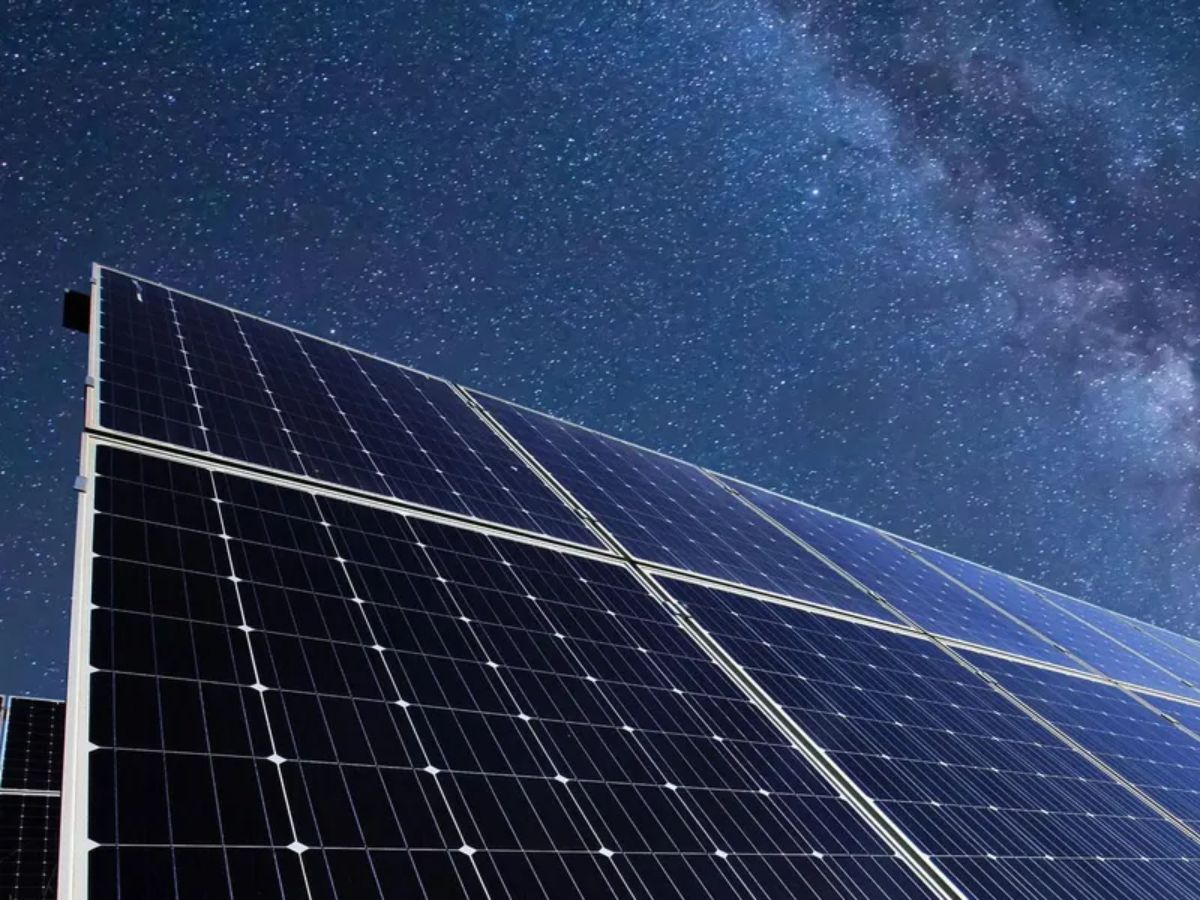Solar panels have been a game-changer for clean energy, but they’ve always had one big catch: no sun, no power. Imagine flipping that script – solar panels cranking out juice after dark. That’s the hype around “Solar Panels That Work at Night? The Breakthrough That Could Change Energy Forever,” and it’s trending hard right now. Just this week, March 23, 2025, posts on X lit up about a wild tech leap from UNSW Sydney, where researchers are pulling electricity from the night sky. This isn’t sci-fi – it’s real, and it could shake up how we power the world. Let’s dive into what’s cooking and why it matters.
The Nighttime Solar Breakthrough: How It Works
Traditional solar panels soak up sunlight and turn it into electricity. When the sun dips, they’re out of commission. But this new tech? It’s a total pivot. Researchers at UNSW’s School of Photovoltaic and Renewable Energy Engineering have cracked a way to generate power using infrared heat – the stuff Earth radiates into space after sunset. They’re using a gadget called a thermoradiative diode, something straight out of night-vision goggles, to catch that heat and flip it into electricity. Interesting Engineering’s March 20 update says it’s small-scale now – 100,000 times less power than daytime solar – but it’s a proof that’s got everyone talking.
Why’s this cool? It taps into a constant energy flow. Earth’s always shedding heat at night, and space is a freezing cold sink. That temperature gap is what drives this trick, no sunlight needed. Stanford’s crew is in on it too, tweaking panels to grab thermal energy after dark, hitting 50 milliwatts per square meter, per a CNET report from way back that’s trending again. It’s not lighting cities yet, but it’s a start that could cut our battery obsession.
The Energy Game-Changer Angle
This isn’t just lab geekery – it’s blowing up because it could rewrite the energy playbook. Solar’s already huge, but nighttime power’s been the bottleneck. World Economic Forum’s latest chatter on March 19 pegs solar as the future’s top power source, predicting it’ll dominate by 2050. Add night-capable panels, and you’ve got 24/7 clean energy without sprawling battery farms. X users are hyped, tossing around ideas like powering remote spots or slashing grid reliance. The timing’s spot-on too – Reuters just dropped on March 22 that Qcells smashed a solar efficiency record, hinting at a tech boom that pairs perfect with this night twist.
The buzz isn’t all roses, though. Some X posts question if it’ll scale – right now, it’s a trickle, not a flood. But the potential? Massive. If this pans out, it’s not just about keeping your lights on – it’s about slashing fossil fuel use for good.
The Science: Breaking It Down
Let’s get real: how does this even work? Daytime solar uses the sun’s heat to excite electrons in silicon cells. Nighttime flips that – Earth’s the hot one, space is the cold sink. The thermoradiative diode catches infrared waves leaving Earth and turns that energy into a current. UNSW’s Ned Ekins-Daukes told ABC News it’s like “reverse solar,” and they’re eyeing space tests soon – think satellites ditching batteries. Stanford’s radiative cooling tweak adds another layer, using the chill of space to drive power. It’s early days, but the combo of these ideas could be the holy grail for renewables.
Why It’s a Big Deal Now
This week’s chatter ties into bigger shifts. Climate’s a hot mess – energy use still pumps out two-thirds of global emissions, per the World Economic Forum. Solar’s cheap now – down 80% in a decade – but nighttime gaps keep us hooked on coal and gas. If these panels scale, they could bridge that gap. Plus, with Oxford’s thin-film solar breakthroughs (August 2024, University of Oxford) coating everyday stuff like cars, night power could turn anything into a mini-grid. X is buzzing with folks dreaming of off-grid cabins or cities glowing green round-the-clock.
Tips to Ride This Wave
Want to stay ahead? Here’s the play:
- Keep Tabs: Follow UNSW, Stanford, and industry updates – big moves are coming.
- Think Small: Night power’s perfect for low-draw stuff – phones, sensors – start there.
- Push Smart: Pair this with batteries or daytime solar for max impact.
Final Thoughts
“Solar Panels That Work at Night? The Breakthrough That Could Change Energy Forever” isn’t just a catchy line – it’s a legit shot at a cleaner future. It’s trending for a reason: the science checks out, the need’s urgent, and the vision’s bold. Will it power your house tomorrow? Not yet. But give it time, and this could be the spark that lights up energy forever. Stay tuned – this one’s got legs.
